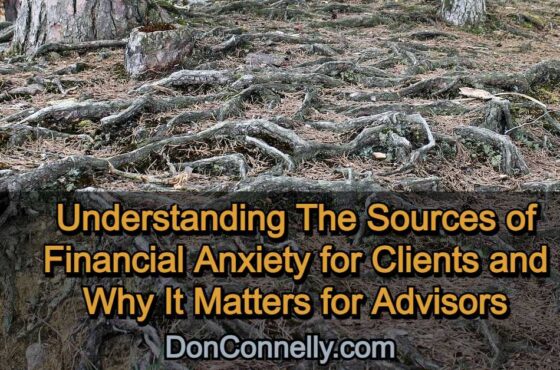Advisors Must be Able to Lead Clients Through Emotional Struggles
 Last year during the COVID market crash was a golden opportunity for financial advisors to demonstrate their true worth to anxious clients as a coach and a counselor. Your greatest value to your clients is being there for them during times of financial stress and anxiety. Good financial advisors are prepared to handle the fallout of a severe market decline, holding their clients’ hands, and coaching them through their anxieties.
Last year during the COVID market crash was a golden opportunity for financial advisors to demonstrate their true worth to anxious clients as a coach and a counselor. Your greatest value to your clients is being there for them during times of financial stress and anxiety. Good financial advisors are prepared to handle the fallout of a severe market decline, holding their clients’ hands, and coaching them through their anxieties.
However, few advisors are as prepared when it comes to facing their clients’ personal emotional issues that can cause even greater stress and anxiety, leading to poor financial decision-making. Life events, such as the death of a spouse or family member, divorce or family rifts, a medical crisis, a job loss, or other major life changes are common. Yet many advisors aren’t prepared to help their clients face the issue, or worse, are unable to recognize when a client is struggling emotionally.
Financial advisors are in their element when dispensing advice critical to their clients’ financial health—it’s natural for them. Client conversations dealing with their emotional issues do not come naturally. Those require preparation and practice. It’s also critical to understand that these conversations don’t come naturally to clients. Many will look as calm as a duck on the water and won’t let on they are paddling their feet frantically below the surface.
But that’s not an excuse for advisors to act as if nothing is going on. To do so could not only damage the relationship, but it could also lead to the client making irreparable mistakes with their finances. It’s these situations that define the type of advisor you are to your clients.
How to lead clients through an emotional crisis
When clients are struggling through an emotional life event, financial advisors must put on their bedside manner by recognizing it’s time to put the numbers aside and engage on a more personal level. Having spent time building strong personal connections with their clients, advisors are well-positioned to broach uncomfortable subjects without appearing insensitive or uncaring. Here are three key steps to follow when approaching your clients:
#1. Don’t talk
This moment should be all about your client. Encourage your client to share their grief or talk openly about their concerns or fears. By listening, and not talking, you are demonstrating how much you care. If your client has trouble opening up or they insist they are fine, encourage them by saying something like, “On the surface you look like you’re doing fine, but it seems like you’re having a bit of struggle. Can you tell me what’s going on?”
#2. Show genuine empathy
We’ve written extensively on the importance of showing empathy to make a personal connection with a client. The exercise of that skill is no more important than in moments of emotional stress. After letting your clients talk about their situation, it’s important to validate their experience and make them feel understood. The best way to make an emotional connection is to share stories that let your clients know you know what they’re going through.
#3. Be forward focused
You may get the sense that a client may not be in a place to talk about the future, but it’s important to keep them moving forward, getting them to look beyond their current circumstances. When the time is right, talk with your client about their priorities going forward and what they see ahead in the short and long term. Reinforce their confidence in their future by reviewing their plan and making any necessary adjustments.
When your clients are in a dark place, you become the shepherd who guides them to a new horizon, reminding them along the way to focus on what they can control. With your help, they’ll get through it, and you will have elevated your role as an advisor who cares. There’s nothing more powerful in a client-advisor relationship.
Watch this 3-minute video to learn how we can help you effectively communicate with prospects and clients, open new accounts, attract referrals from your clients, and influence their behavior so they make informed and better decisions.
See workshop details and reserve your seat today!
Three 3-hour workshop sessions, workshop materials, and a follow-up program (incl. a group caching session) are part of this workshop experience. See more details and available dates.



